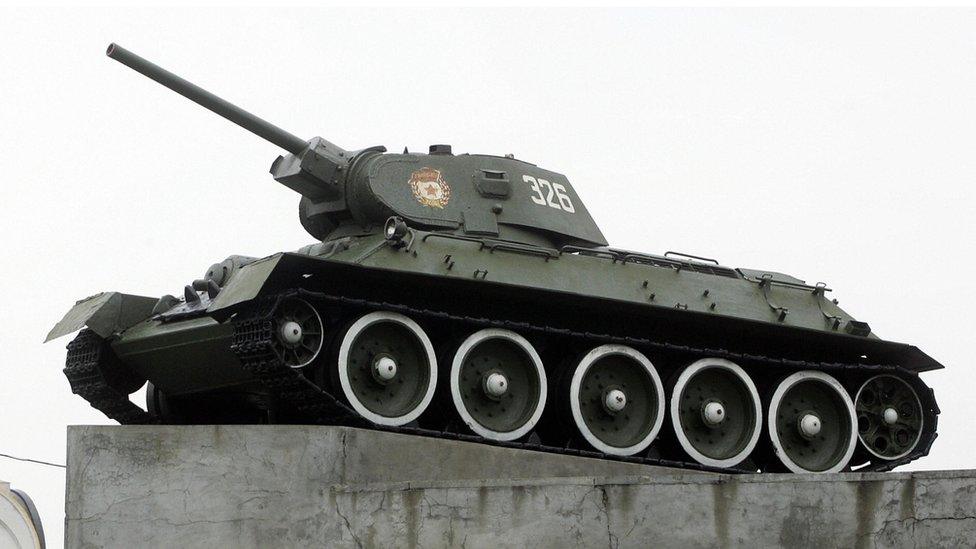Wolf's Lair: Will Hitler HQ makeover create a Nazi theme park?
- Published
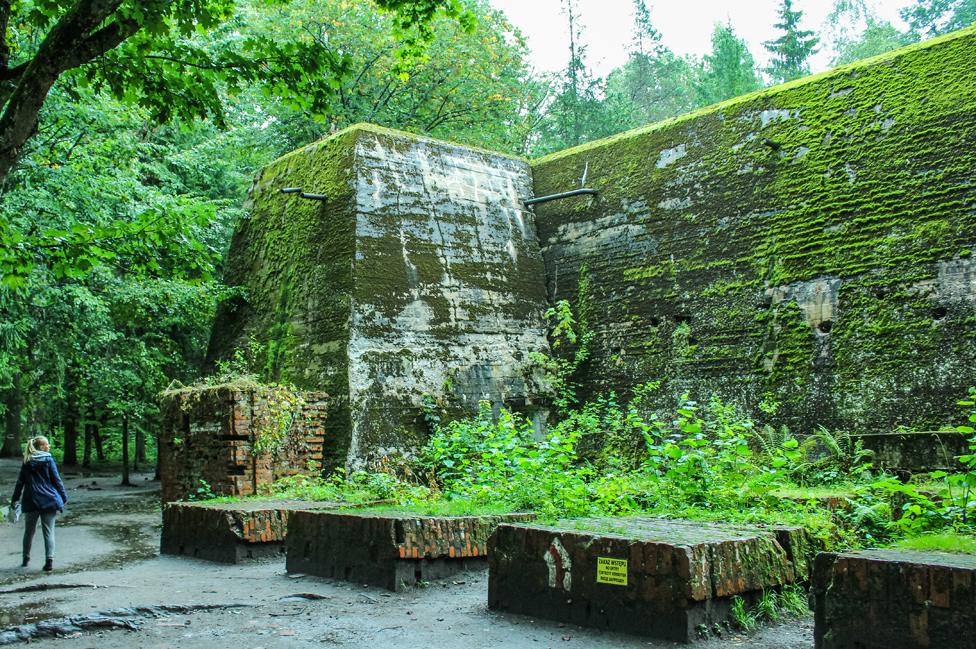
The reinforced concrete was so massive that some structures survived the Nazis' demolition work
Remote, hidden in dense forest, protected by nearby lakes and marshes - the Wolf's Lair in Poland was a secure headquarters for Adolf Hitler in World War Two.
So much so, that the Nazi dictator spent 850 days at the vast, secret complex in 1941-1944, before withdrawing to his Berlin bunker.
Now the Polish state's Srokowo Forest District, which manages the site, is giving the Wolf's Lair a big makeover to pull in more tourists.
The district's spokesman Sebastian Trapik told the BBC that the foresters were "making every effort" to maintain "due seriousness and respect for historical truth" at the crumbling complex.
But critics argue that insensitive "attractions", such as amateurish re-enactments with people wearing Nazi uniforms, could turn it into a sort of ghoulish "Disneyland".
All the Germans' reinforced concrete bunkers, minefields and camouflage were no protection against the mutinous officers who tried to kill Hitler at the Wolf's Lair on 20 July 1944.
The assassination plot makes the site all the more fascinating for visitors today.

Mussolini and Hitler inspect the wreckage of the conference room after the bomb
Hitler survived the briefcase bomb with only light injuries, mainly thanks to a massive oak conference table.
The bomb killed four - three of them officers - and injured more than 20. The German army plotters, led by Col Claus Schenk Graf von Stauffenberg, were quickly arrested and executed.
Mr Trapik says a "priority" at the site now is to reconstruct the scene of the bombing, including life-size "symbolic figures depicting those present at the time".
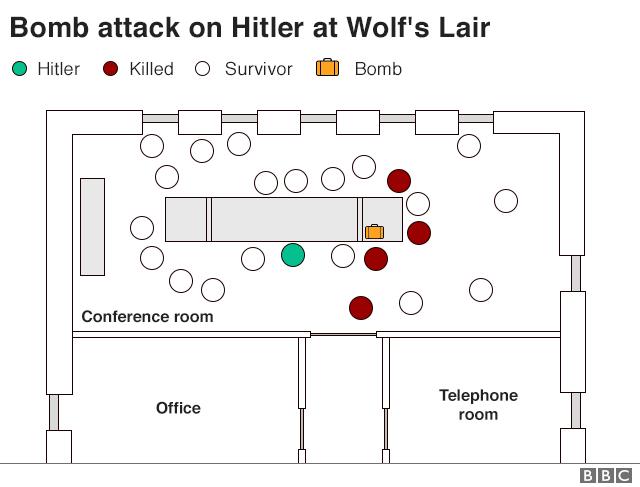
The Nazis detonated massive explosive charges to demolish the dozens of bunkers and other installations as the Soviet Red Army advanced in January 1945.
For decades, in communist Poland, the forest grew back in the ruins and moss spread over the giant concrete blocks.

The Wolf's Lair (Wolfsschanze)

Wolf's Lair, August 1941: Hitler (C) and Mussolini (2nd L) study maps of the Russian front
Hitler's HQ for Operation Barbarossa, the Nazi invasion of the USSR on 22 June 1941, when more than three million German troops attacked the communist state
Hitler spent most of the war at this HQ - in what was then East Prussia - from June 1941 to November 1944
There were about 200 installations, including two airstrips and a railway station, protected by minefields and anti-aircraft guns
At the HQ Hitler and his top aides took key decisions in their campaigns to annihilate the USSR and Europe's Jews (the Holocaust)
Italy's fascist dictator Benito Mussolini and other Axis allies visited Hitler there
The site, spread over 250 hectares (618 acres), is an important income source in the Masurian Lake District, a scenic area dependent on tourism.

The site's managers, external are now improving tourist facilities, but such efforts would backfire if they encouraged neo-Nazi pilgrimages.
There are new information panels, a new car park and entrance building, and plans to build a hotel and restaurant.
A free app guides visitors round the site and they can watch a film about the Nazi HQ's history. Some military equipment is also on show.
Nearly 300,000 tourists visit every year, most of them Poles and Germans. The basic entrance fee is 15 zloty (£3.16; $4).

Historical re-enactments are popular now in Poland, but having actors posing in Nazi uniforms would be even more controversial than the static Nazi figures envisaged by Mr Trapik.
A leading Polish historian of the war, Prof Pawel Machcewicz, said such a move would be "insane and outrageous".
He told the BBC that "the scars left by the war should be preserved and presented as a lesson, a warning".
"Exhibitions should explain the history, contextualise the place, but not completely overshadow it."
Mr Trapik says there are plans for historical re-enactments, starting this summer with a staging of Operation "Ostra Brama", when the Polish Home Army defeated the German Wehrmacht in Vilnius in 1944.
That Polish victory was short-lived, as Soviet forces sweeping westward soon began imposing a communist terror.
Read more on related topics:

Shrubs growing in massive bunkers
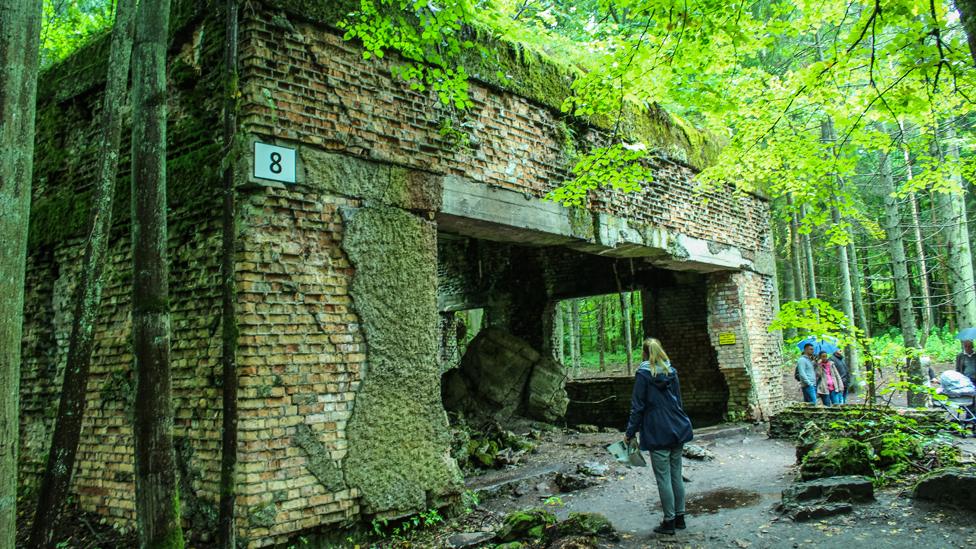
The Allies only discovered the Wolf's Lair after Hitler had abandoned it
The BBC's Jim Todd writes:
Visiting the Wolf's Lair gives a chilling insight into the German war machine. The vast bunkers were constructed above-ground with concrete walls 8m (26ft) thick - so solid that the SS were unable to demolish them in 1945, despite using tons of dynamite.
Some lie on their side, others are more or less intact, though with large cracks. Tourists can go inside them, and walk among the barracks, in conditions a little less health and safety-conscious than British holidaymakers might find normal.
Information boards are sparse and there is not much explanation in English.
Trees and shrubs grow out of some bunkers, and bits of iron stick out of the forest paths in places.
Of the building where Hitler survived the assassination attempt, only the concrete floor remains. It seems extraordinary - and rather an unreal experience - to stand on the spot where the momentous event happened.

The Wolf's Lair was where the Nazis took notorious decisions on the Holocaust and the slaughter of civilians in Warsaw, so history must be presented there sensitively, out of respect for the many victims, Prof Machcewicz argued.
Silent film shows the intense fighting at Stalingrad in 1942-43
He warned against creating "a moribund Disneyland, which could promote a sort of fascination with Nazi Germany and Hitler".
Prof Machcewicz described the Polish trend for historical re-enactments as "morally dubious". They have included:
Bedzin, 2010: a re-enactment of the Nazis' 1943 deportation of Jews from the Bedzin ghetto , externalto death camps
Radymno, 2013: Polish villagers' mock cottages were set ablaze, external by actors dressed as Ukrainian nationalists, in a dramatisation of the Volyn massacres of 1943-1944, in which as many as 100,000 Polish civilians died.
The modern presentation of painful history raises challenging issues of taste and morality. Young visitors are further removed from those dark events, so history needs to be made real and accessible for them.
The Wolf's Lair is an extraordinary place, seen by Poles as a scar on the beautiful Masurian landscape. But gimmicks to entertain tourists risk making a mockery of Poland's wartime suffering.
- Published20 July 2014
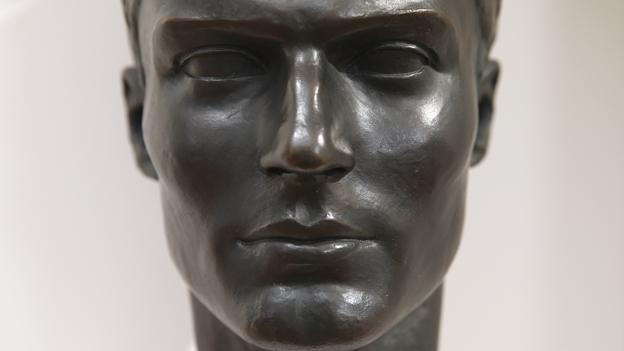
- Published24 January 2017
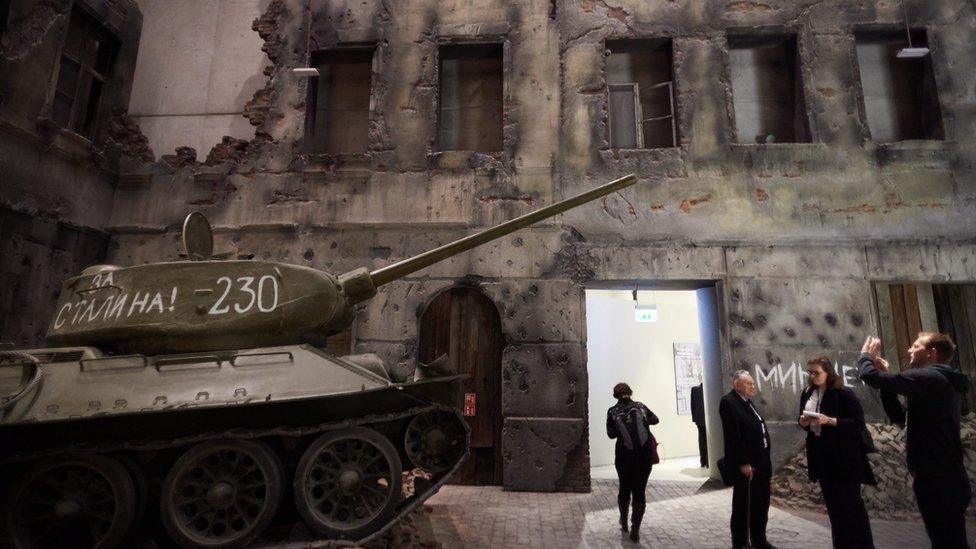
- Published20 July 2019
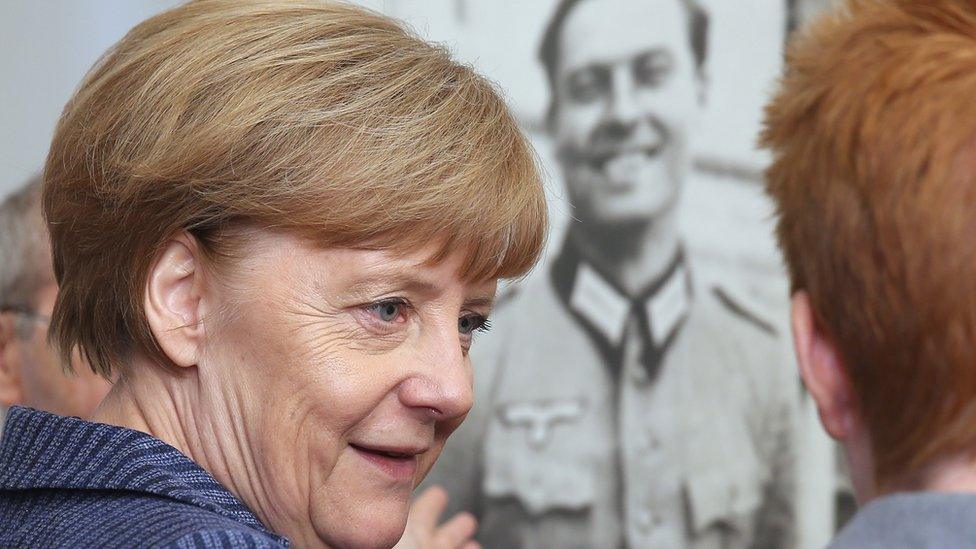
- Published13 July 2019
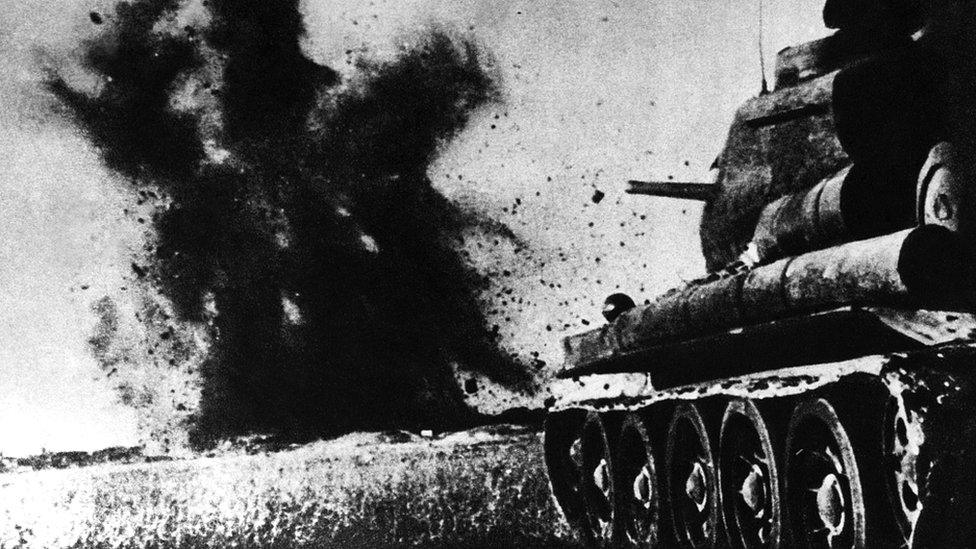
- Published31 July 2017
